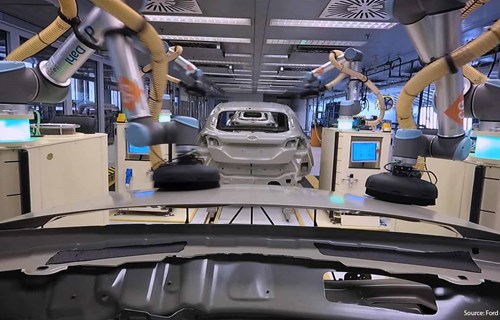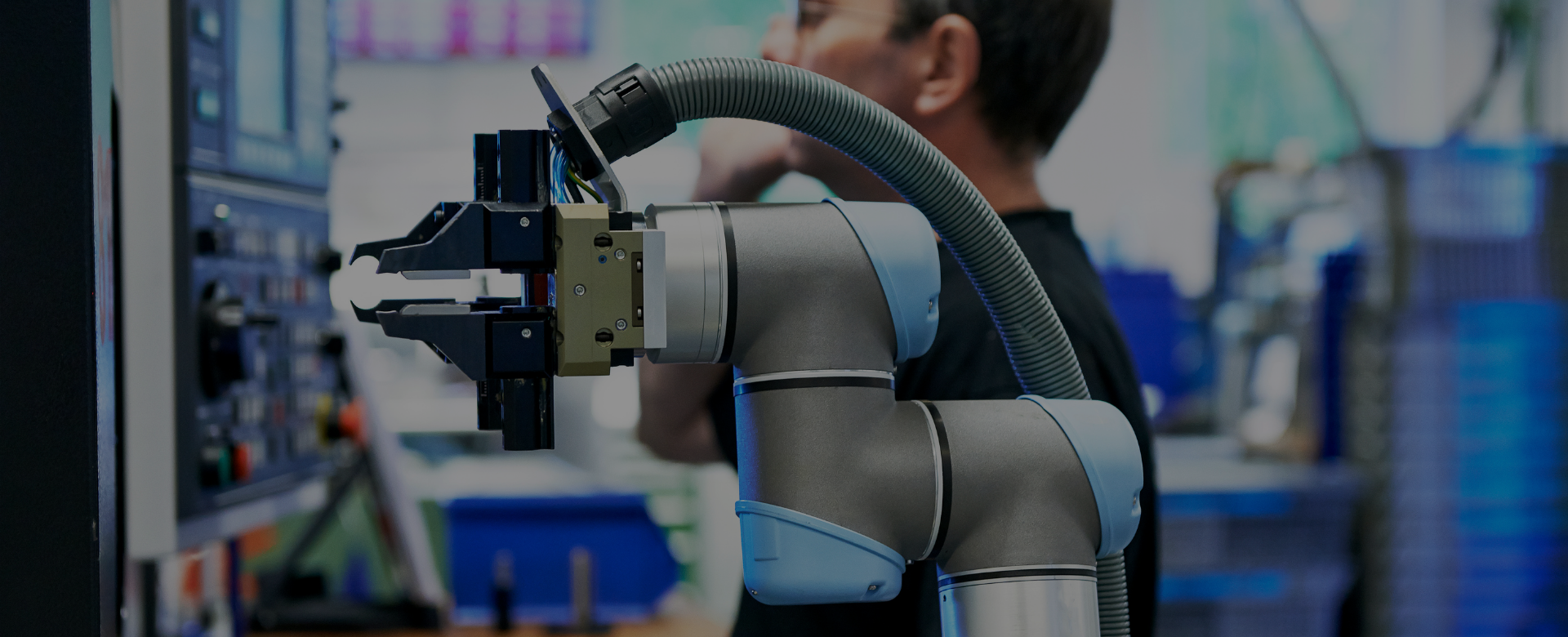“When operators look at thousands of parts a day, they sometimes become “snow-blind” to defects. But that never happens to robots.” Operations manager at Zippertubing in Arizona, USA, Tim Mead, describes in an interview with The New York Times how his UR5 cobot now tends the snap-set machines that add thermal wrap around hoses, pipes, and cables. The 25-second cycle concludes as the UR5 presents the piece to a vision camera that inspects whether the snaps are added correctly. Depending on the outcome, the UR5 is directed to place the finished piece in either the “good” or the “scrap” pile.
“The biggest benefit we’ve found with the UR5 cobot is that our product quality really has improved; the robot has been running for eight months now and we have gone from having some product returns to now zero defects on parts produced,” says Mead. “With the robot itself, we can specify 300 percent more tolerance on our parts than with manual operation,” he says, adding that the UR5 also solved Zippertubing’s difficulty in hiring staff for this repetitive task. “It used to take three people to do all of the operations that the robot now does, so this has really opened up production capacity for us.”
The Arizona company programmed its first UR5 to pick up pre-cut fabric material that the cobot moves through a snap-set machine where five male snaps are inserted, then it moves over to a second machine where five female snaps are added.
Making the robot the “brain” of the cell
Deploying the vision camera with the UR5 first seemed like a daunting task. “The really tricky part was “How do I get the robot to talk to the camera, and who’s in charge?” says the operations manager. “So learning about the Universal Robots, we actually were able to make that essentially our PLC; the robot is the brain—it sends out all the commands and it takes in all the feedback.” The robot simply looks for feedback from the camera. If it doesn’t find it, it says it’s a bad part; if it finds it, that means the part was good, and it sorts it accordingly.
“We chose Universal Robots’ UR5 for a few reasons,” says Matt Hesselbacher, engineering manager at Zippertubing. “After a quick demo, we realized this was a collaborative robot we could integrate on our own. With products that change from month to month, we were also looking at the versatility,” explained Hesselbacher. “And as always, safety was a priority, as operators would be working around the robot, feeding it raw parts and take away the finished pieces.”

















